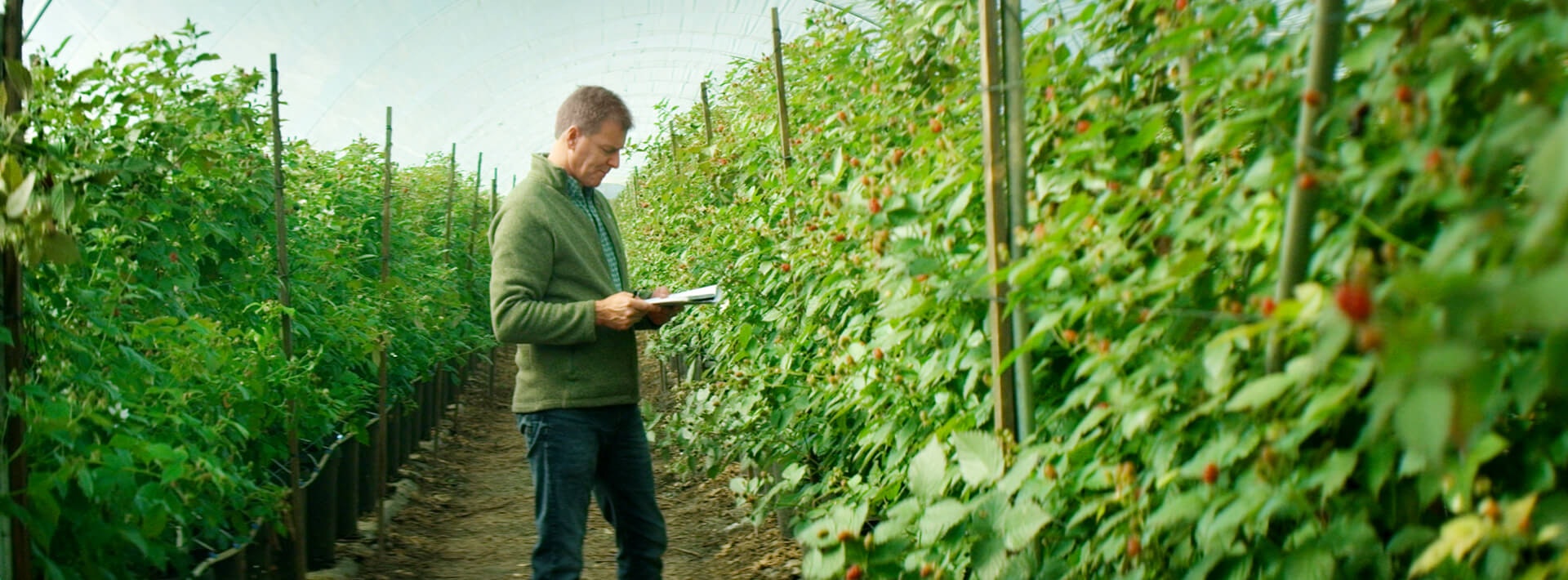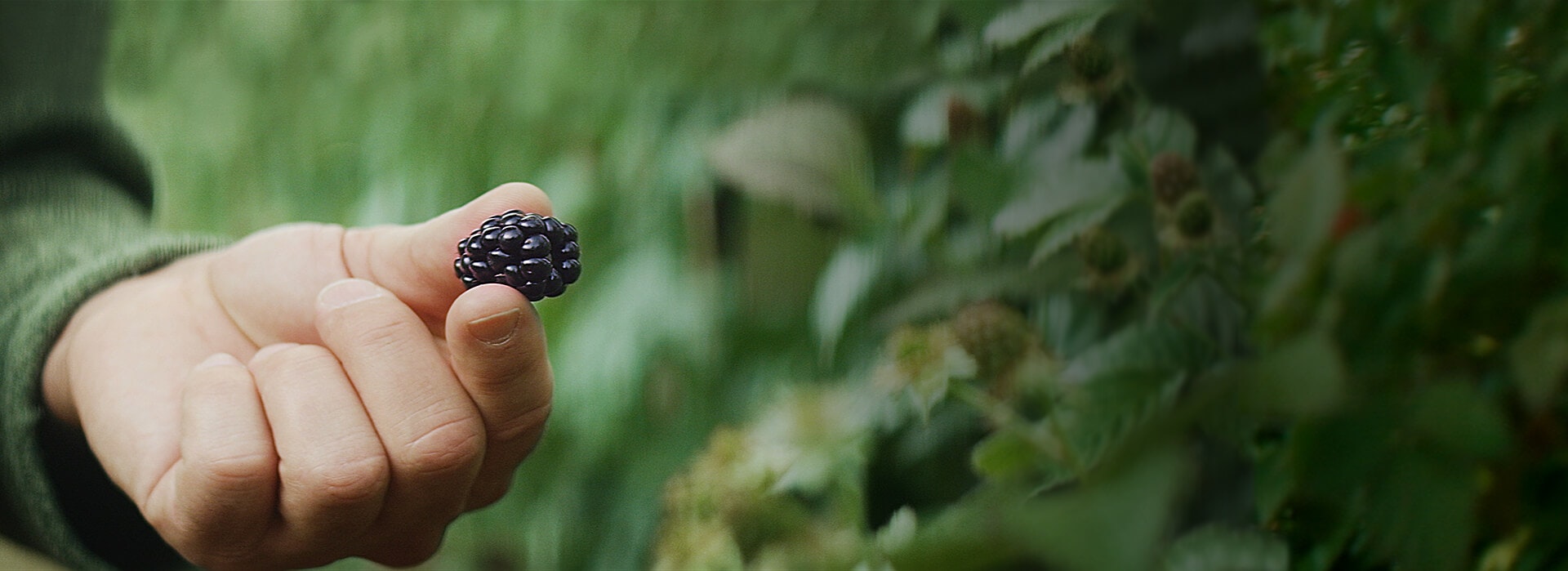Recipes
Growing Driscoll's Blackberries: Wild Blackberries to a Household Staple

You’ve no doubt seen wild blackberry bushes on the side of the road: a tangled, heaping mess of spindly, thorny branches engulfing an electrical pole, wooden fence or street sign. The wild blackberry is an unwieldy plant that bears more thorns than fruit. But what if we told you that through several decades of vision, imagination, dedication and a whole bushel of love, these seemingly wild and weedy berries became a Driscoll’s all-star?
In the 1990s, the Driscoll’s raspberry breeding team saw potential in breeding blackberries but it was a hard sell to the company. “At first, they thought we were crazy,” says Gavin Sills, Driscoll’s Global Director of Blackberry Breeding. “There wasn't a lot of enthusiasm for blackberries back then. They said, ’You’re going to take a berry that grows on the side of the road and expect people to buy them?’ And that’s exactly what we did.”
Despite the initial skepticism, the Driscoll’s raspberry research team persevered, becoming advocates for the blackberry and seeing beyond what most others saw.
For decades, blackberries were considered virtually inedible. Small, sour and seedy, they served as dainty garnishes on dessert plates or as an ingredient that could only be made palatable with some seriously saccharine help. “Blackberries used to have a bad reputation for flavor,” says Gavin. “They were tart, sometimes bitter and astringent. Basically, they were an ingredient that needed a ton of sugar.”
The Driscoll’s research and development team set out to change that. In the initial stages of Driscoll’s blackberry research, the team used creative ways to persuade dubious taste-testers. “The flavor-testing process was a little more complicated back then. Blackberries are traditionally a tart fruit—and there was some real good tartness in those days—so flavor testing was challenging. We had to entice people with rewards like ice cream and cookies just to get good participation in our flavor tests,” Gavin says with a smile.
As the years passed and trial after trial was completed, the team’s hard work began to pay off. “Just through good old-fashioned plant breeding—and a lot of folks along the way looking for small improvements—those changes added up over the years,” he says.

“It wasn’t until we tested our blackberry in Mexico that we had our biggest breakthrough. The blackberry that we produced in Southern California during the winter, it was okay,” he says, “But when you take those same genetics and test them in central Mexico where it’s nice and toasty all winter long, they become spectacular. It’s a flavor unlike any other berry—it’s delicious, rich, with a perfect balance of sweet and acid. I remember tasting that first berry from the vine after twenty years of blackberry breeding and thinking that we finally had something special.”
Walking the vast rows of blackberry test plots, Gavin gives us eye-opening insight into his day-to-day work as a blackberry breeder. “It’s humbling and you never stop learning. We walk our seedlings every week, tens of thousands of plants we’re evaluating. Most of my work ends with nothing to show for it. I’m proven wrong over and over again, and there’s an element of chance in the whole deal. And sometimes, you just get lucky.”

Even with this flavorful breakthrough, Gavin and his team are working diligently to make even more improvements to the Driscoll’s blackberry. “It’s the holy grail for me, to develop a blackberry that’s shippable around the country, that people enjoy, and is really aromatic. And for years, I’ve worked toward bringing those traits into our blackberries so our consumers can’t get enough of them—I want them to be gone before they get home from the store.”
Watch Driscoll’s new miniseries “Pursuit of Flavor” to discover more about our berry breeding programs.